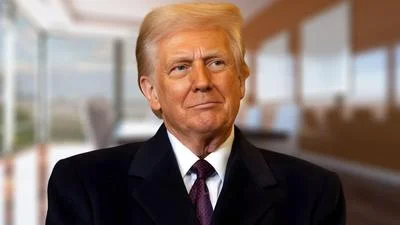The Congressional Record is a unique source of public documentation. It started in 1873, documenting nearly all the major and minor policies being discussed and debated.
“H.R. 3946--THE ICCVAM AUTHORIZATION ACT OF 1998” mentioning the U.S. Dept. of Transportation was published in the Extensions of Remarks section on pages E1047-E1049 on June 5, 1998.
The publication is reproduced in full below:
H.R. 3946--THE ICCVAM AUTHORIZATION ACT OF 1998
______
HON. TOM LANTOS
of california
in the house of representatives
Friday, June 5, 1998
Mr. LANTOS. Mr. Speaker, recently I introduced legislation to promote better business, protect consumers, increase the efficiency of the federal government, contribute to scientific progress, and protect animals. H.R. 3946--The ICCVAM Authorization Act of 1998--is a non-
partisan, non-controversial bill that emphasizes the protection of human health as well as animal health by facilitating the acceptance of alternative testing methods.
Mr. Speaker, there has never been such an impressive marriage of diverse interests working together to supply the same legislation. I am honored and delighted that H.R. 3946 is supported by the Procter & Gamble Company, the Gillette Company, the Colgate-Palmolive Company, the American Humane Association, the Humane Society of the United States, the Massachusetts Society for the Prevention of Cruelty to Animals, the Doris Day Animal League, and over 6.5 million Americans who have demanded viable alternatives to animal testing whenever possible.
Animal tests have been used for over fifty years by federal regulators to test for product safety. In the last decade, however, biotechnology companies have researched, developed, and manufactured alternative testing procedures that are just as effective as outdated animal testing, but these newer technologies currently have no established avenue for receiving approval by federal agencies. By continuing to promote antiquated, although generally accepted, animal tests, federal agencies have put up an unnecessary roadblock to scientific and technological progress and innovation.
Mr. Speaker, in an effort to eliminate duplicative efforts and to increase communication in cross-cutting levels of different Federal regulatory agencies, the ground-work for the Interagency Coordinating Committee on the Validation of Alternative Methods (ICCVAM) under the National Institutes of Environmental Health Sciences (NIEHS) was laid by the National Institutes of Health (NIH) Revitalization Act of 1993. The ICCVAM has functioned solely on an ad-hoc basis since that time and was the first body to establish criteria for the validation and acceptance of alternative methods.
This important committee has functioned well and recently completed a final report receiving acknowledgment from federal agencies. Under the NIEHS Applied Toxicological Research and Testing Program, ICCVAM Contracts were listed in the Federal Register: $666,950 (year one),
$691,308 (year two), $717,167 (year three), with two additional option years. In contrast, the NIEHS budget for FY1998 was over $300 million. The ICCVAM is a body that more than pays for itself in terms of its worth to the Federal agencies and its contribution to industry and the public.
H.R. 3946 will raise the ICCVAM to standing committee status and thus we can continue to move forward into the next century recognizing and supporting scientific progress. For years, the regulated industries and the bio-tech companies that engineer alternative testing methods have endured a frustrating, confusing Federal process for test method review and approval. Despite the fact that many companies have committed themselves to ensuring human safety while decreasing the usage of unnecessary animal tests, the federal government has remained unresponsive to their concerns. Mr. Speaker, these businesses have petitioned Congress to authorize the ICCVAM, thus simplifying the process for evaluating new tests.
I have introduced legislation that, for the first time, provides for gathering information in a single body for agencies, companies, animal protection advocates, and the consumer. H.R. 3946 requires that agencies be accountable for providing the appropriate information regarding all regulations, requirements, and recommendations on the animal tests under their respective jurisdictions. Federal agencies with jurisdiction over toxicity tests would be required to review and identify all regulations that require animal use for toxicity tests and forward the list to the ICCVAM.
Mr. Speaker, by adopting this legislation, the Congress will demonstrate a commitment to increasing the health and environmental safety of Americans. H.R. 3946 will open the doors to more technologically-advanced methods of research that will more closely replicate the reactions of the human body than does the current research that is done on animals. When a method meets a specific endpoint for specific agencies, or needs multiple agency acceptance, the ICCVAM can encourage agencies to modify their recommendations and/
or requirements to reflect the best new scientific methods.
H.R. 3946 requires that agencies notify the ICCVAM within 180 days of receiving the ICCVAM's recommendations. The ICCVAM does not mandate the acceptance of any alternative testing method; it requires that federal agencies consider the ICCVAM's recommendations on new test methods and provides strict criteria under which the federal agencies can reject the alternative testing method. Under the Federal Advisory Committee Act, each agency under current federal statute has the ultimate authority to accept or reject recommendations in any situation under its regulatory jurisdiction.
Importantly, H.R. 3946 will end the incentive for companies to prefer status quo animal tests by giving the ICCVAM the authority to make an otherwise fragmented regulatory process coherent, cost-efficient, and accessible so that industry can more readily market its products.
Mr. Speaker, when the NIEHS worked towards the goal of establishing the ad-hoc ICCVAM as a single review body for the entire federal government, the objective was to end the usage of inappropriate tests from as far back as the 1940's before we stepped into the 21st century. Without the ICCVAM, we will fall short of maximizing health and human safety protections for all consumers. H.R. 3946 prioritizes high human health standards.
Mr. Speaker, to ensure that there is no confusion in its objectives and jurisdictions, H.R. 3946 also contains a specific exemption for regulations, guidelines, or recommendations related to medical research, expressly written into the bill. In effect, Mr. Speaker, medical research is not directly regulated by the federal agencies in the same manner as product testing.
Mr. Speaker, I am delighted to introduce the ICCVAM Authorization Act of 1998. I believe that H.R. 3946 streamlines the federal bureaucracy while increasing human safety and progress while refining, reducing, and replacing animal testing. We in Congress must ensure that as we step into the next century, the federal government works efficiently to demonstrate leadership in scientific advancement while emphasizing human health and animal health. With these goals in mind, Mr. Speaker, I urge my colleagues to join me by supporting this bill.
Recently, Mr. Speaker, I held a briefing on H.R. 3946. This legislation was broadly supported by the public and by all those who would be affected by this legislation. Mr. Speaker, I would like to defer at this time to the comments of the industry experts, scientists, and animal protection advocates, and federal agency representatives who have been integral in the creation of this legislation. Mr. Speaker, several of these distinguished professionals attended a briefing which I chaired and spoke out in support of H.R. 3946 and the merits of the ICCVAM. I ask that the full text of their testimonies be placed in the Record.
Text of Presentation by Dr. Katherine Stitzel, The Procter & Gamble
Company
The Procter & Gamble Company is pleased to be here today to support the ICCVAM Authorization Act of 1998. P&G is one of the largest consumer products companies in the world. Our products our under the sink and in the bathroom medicine cabinet in nearly every home in America and used by billions of people around the world. We have an obligation to ensure our many products are safe not only when they are used as intended, but also when they are accidentally ingested by children, splashed into your eye, or used in other ways which were not intended.
We believe the ICCVAM Authorization Act of 1998 is a very important step in industry's efforts to reduce the use of animals while ensuring product safety. As science has progressed over the years industrial toxicologists have been constantly researching new ways to assess the effects of new products and ingredients. In the last fifteen years we have concentrated on developing and gaining regulatory acceptance of alternative methods, that is methods that reduce the number of animals necessary or the stress caused to the animals or that replace animals with an in-vitro or non-animal method. We have spent over $64MM dollars on this effort and reduced our animal use for non food/non drug testing by over 85% since 1984 even though the Company is more than three times larger than it was in 1984.
While we cannot predict every possible toxicological effect with an alternative test, there are many effects, such as the ability of a material to penetrate the skin, where we still find ourselves having to resort to what we believe is unnecessary animal testing. this is because the process for getting regulatory agencies to accept improved toxicological methods is time consuming, difficult and very rarely successful. Each new test must be submitted for evaluation and approval to each agency--sometimes to several different divisions within one agency. As the agencies are very busy, most do not have the time to carefully evaluate new test methods and therefore they opt to continue to use their current methods. Think about it, we are about to begin the 21st century using many toxicology methods that were originally developed in the 1940's. I can think of few other fields where acceptance of scientific progress has been so effectively blocked.
Recognizing this problem in the early 1990's P&G joined other companies and animal welfare organizations to support inclusion of language in the NIH Revitalization Act of 1993 which directed National Institute of Environmental Health Sciences to ``establish criteria for validation and regulatory acceptance of alternative testing and recommend a process through which scientifically validated methods can be accepted for regulatory use''. NIEHS worked with 15 government agencies and with the public to develop what we believe will be an effective solution--to create a single review body for the entire federal government. This organization, ICCVAM, is comprised of representatives from the various federal agencies that use animal testing. It will encourage the development of improved testing methods, particularly alternative tests, and evaluate these new methods for the entire government. This simplified process will be much more efficient. It will also be more effective because ICCVAM scientists will be expert in evaluating new test methods. We are very supportive of the proposal, and feel it is important to make ICCVAM a permanent part of the NIEHS.
We in industry applaud the efforts of Doris Day Animal League, the American Humane Association, the Humane Society of the United States, and the Massachusetts Society for the Prevention of Cruelty to Animals for working with us to help establish ICCVAM as the organization that will help ensure we are using the most efficient and effective safety tests and reduce animal use as far as scientifically possible
____
Comments by Neil L. Wilcox, D.V.M., M.P.H., Senior Science Policy
Officer, Office of Science, Food and Drug Administration for the Congressional Briefing on the ``Inter-Agency Coordinating Committee for the Validation of Alternative Methods (ICCVAM) Authorization Act of
1998''
Congressman Lantos and distinguished guests, thank you for the opportunity to participate in this briefing. I am here to describe the current and potential relationship between the Food and Drug Administration and the Inter-Agency Coordinating Committee for the Validation of Alternative Methods, or ICCVAM, listen to your comments, and attempt to answer your questions.
For the record, I may not take a position in favor of, or in opposition to, this or any other proposed bill intended for Congress. I am here to inform this audience as to how FDA has participated on the inter-agency committee known as ICCVAM and what affect it may have on the FDA in the future.
The FDA has a sincere and dedicated interest in emerging scientific technologies, including alternative methods intended to reduce, refine, or replace the use of animals, and that provide the agency with the best scientific answers to accomplish our public health mission. In particular, we are interested in test methods that provide specific answers for safety and efficacy testing of FDA-regulated products. To this end, the FDA supports the notion of the 3-R's in research and testing where scientifically feasible.
The FDA has been a participant of the ICCVAM ad hoc committee since it was chartered in 1994 and continues to be actively involved now that it is a standing committee. The Office of Science has the lead for the agency and has formed a committee with representatives from all FDA Centers and the Office of Regulatory Affairs.
You should understand that there is currently no formal process for a new testing method to be reviewed by the FDA for validation or regulatory acceptance. New methods are incorporated into the review of product applications in FDA, but it is on a case-by-case basis with no internal structure in place to facilitate such action. The ICCVAM model proposes to review new testing methods on behalf of federal agencies, which would provide a service not currently available.
ICCVAM, with its representatives from 15 federal agencies, provides many benefits. This forum benefits not only the agencies involved but also those who wish to introduce a novel test method to a regulatory agency such as FDA. ICCVAM will only review methods that have application to more than one agency. If the method is such that it will be used only by one agency, the sponsor of the method will be encouraged to take the method straight to that agency. For a method with potential use in several federal agencies, an early step in the ICCVAM process will be to establish an expert working group consisting of individuals from each of the agencies where the method may have application. This expert working group will then work with the sponsor of the method to make sure that adequate data are available to have the method thoroughly evaluated.
Any method used by the FDA must be validated for its intended use. Once the ICCVAM working group has determined that the method is ready to be reviewed for validation, a group of experts from outside the government would be convened as a Federal Advisory Committee. Through this external peer review process, the committee would make a recommendation to ICCVAM as to whether or not the proposed method meets the criteria for validation as put forth in an ICCVAM document, Validation and Regulatory Acceptance of Toxicological Test Methods, published in March 1997. The expert peer review panel's recommendation would then be conveyed to the relevant federal agencies by ICCVAM. Finally, each agency would distribute the recommendation to its appropriate organizational components.
FDA has five product Centers, on research Center, and the Office of Regulatory Affairs to which the ICCVAM recommendation would be distributed. It is clear that considering the many offices within the FDA to which such information must be distributed, the ICCVAM proposal would stream-line the process. Without ICCVAM, no one would know exactly which office should review a particular test. Moreover, even if one did know the appropriate offices to which a new method should be introduced, there would be no consistent review criteria for validation or regulatory acceptance across the agency. The individual review offices are simply not equipped or staffed to work with a method's sponsor for a process as resource intensive as validation.
Through an exhaustive and comprehensive three year process, ICCVAM has worked with U.S. federal agencies, as well as academia, industry and governments world-wide, to reach consensus on criteria for validation and regulatory acceptance. Due to the vast differences in regulatory requirements between U.S. regulatory agencies, not to mention other governments, the final acceptance and use of an ICCVAM-reviewed method remains the prerogative of each regulatory agency. However, ICCVAM assures that, to the extent feasible, adequate data for the proposed method have been reviewed by external peer review for their validity. ICCVAM provides a vehicle for a new method to be introduced to each agency through scientists responsible for its internal use.
With such intimate involvement of agency experts from within the appropriate scientific field, the method and its potential uses will be well understood by participating agencies. Furthermore, by the time a method has reached recommendation status to the agencies, it will more likely gain regulatory acceptance. Since the ICCVAM process has been endorsed by experts across the U.S. and throughout the world, international harmonization on ICCVAM-reviewed methods will be encouraged. Finally, the incorporation of methods that promote the reduction, refinement, and replacement of whole-animal tests into regulatory decision-making clearly supports the responsible use of animals in product testing.
In summary, from an FDA perspective, the ICCVAM facilitates the scientific review by experts, in both the public and private sectors, to establish the scientific validation of new testing methods that may have application in determining the safety of FDA-regulated products. It should be emphasized, however, that there may be occasions when a sponsor of a particular method would prefer submitting its data on a new method directly to the FDA, or any other agency, and this remains an important option. The ability to employ new technology in the regulatory decision-making process and facilitate the acceptance of new methods for safety testing is clearly enhanced with the added dimension of the ICCVAM process.
I would welcome questions relating to the current activities between ICCVAM and FDA, as well as our vision of this relationship in the future. Again, thank you for the opportunity to discuss this important issue in a public forum.
____
Statement of Holly E. Hazard, Executive Director, Doris Day Animal
League
We are proud to join with industry and animal protection organizations in support of the ``ICCVAM Authorization Act of 1998.''
The bill, sponsored by Representative Tom Lantos, will raise to standing status, an interagency coordinating committee that will review alternative methods for risk assessment and safety substantiation for humans and the environment. ICCVAM will make recommendations to agencies to adopt procedures for implementing these recommendations. The committee will be comprised of representatives from each of the agencies with jurisdiction over products that require or recommend some form of animal testing. There are over 15 such agencies in the federal government. The committee will also establish a scientific advisory committee that will allow interested outside scientists and other stakeholders to comment on newly-developed alternatives as they become available.
This committee will facilitate the acceptance of the use of alternatives that will significantly decrease the numbers of animals used in toxicity testing, while not only ensuring that the health and safety of Americans and the environment remain at the highest level, but hopefully increasing that level of safety as more technologically-advanced methods of research more closely mimic what may happen in the human body.
The bill is an outgrowth of the former Consumer Products Safe Testing Act. It builds on the mandate given to the National Institute of Environmental health Sciences in the NIH Revitalization Act of 1993 to develop criteria for the validation and acceptance of alternative methods. It also consolidates the requirements for an evaluation of alternatives that have interagency implication to one central committee, rather than agency by agency.
We've received many staff calls on how this bill affects medical research. The bill has a specific exemption for research. However, because the government does not regulate industry protocols for medical research, the entire issue is outside the scope of the legislation.
The Doris Day Animal League is working with a number of leaders in industry, and within the animal protection movement, to bring about changes in the uses of animals for toxicity testing. These individuals include: Dr. Martin Stephens and Dr. Andrew Rowan of the Humane Society of the United States; Dr. Dan Bagley of Colgate-Palmolive; Dr. Wallace Hayes and Dr. Louis DiPasquale of Gillette; Dr. Kathy Stitizel of Procter & Gamble; Ms. Adele Douglass of the American Humane Association; and Dr. Peter Theran and Elaine Birkholz of the Massachusetts Society for the Prevention of Cruelty to Animals.
One of the significant frustrations of the humane community has been the lack of acceptance by the federal government of technologically-advanced alternatives to animal testing. Many in industry have met with a brick wall when they have attempted to move alternative methods of testing through the government bureaucracy to get their products on the market. The fact is that the easiest thing for any company is to simply maintain the status quo and do the animal tests to get on with marketing their products.
The Doris Day Animal League, along with a number of other organizations, successfully lobbied the Department of Transportation for the acceptance of the first federally-approved alternative to animal testing. This was an alternative to the use of rabbits for the testing of highly corrosive chemicals to determine the correct packaging material for transportation. In the animal test, the product would literally eat away the skin of a rabbit while researchers tested how long this took; it could take anywhere from hours to days. While this alternative was accepted at one agency, the company had to petition others for multiple agency acceptance and, as of yet, has been unsuccessful in securing full federal approval for the continued acceptance by the government of this alternative.
This bill is desperately needed to push this issue forward significantly in this country, and because of this country's stature in this area, throughout the world. We believe that many companies are standing ready to invest the resources that they need to develop alternatives. And now regulators have taken the first step. Many in the federal bureaucracy are extremely comfortable with old methodologies that have established protocols and a history of success from a regulatory perspective. Congress needs to push these agencies to look ahead, not behind, in terms of the most efficient, effective and humane scientific judgment that should be expected from the agencies called upon to protect the consumers of this country.
I urge your strong support of the ICCVAM Authorization Act and invite questions for the League or for our industry supporters.
____________________








